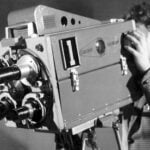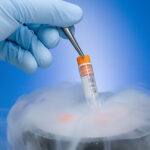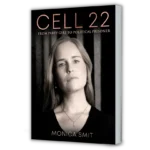The Stem Cell Debate
The issues of cloning in general and stem cell research in particular have swamped the media during the past several years. As in earlier debates about abortion and euthanasia, there are many issues to sort through – issues of science and technology, issues of philosophy and social policy, and issues of ethics and morality. Stem cell research will be an ongoing debate, because of new developments in biotechnology, and the ongoing social/ethical debate.
It is claimed that great benefits are promised in the area of stem cell research. Proponents claim that such experimentation may eventually alleviate or heal ailments like Alzheimer’s disease, Parkinson’s disease, diabetes, spinal cord injuries, heart disease and cancer. It is hoped that the new cells may be guided to act as replacements for damaged tissue. Heart attack and burn victims, for example, cannot regenerate these damaged tissues. The stem cells may have the capacity to do this.
More specifically, stem cells are the cells from which different kinds of tissue in the human body originate. Because many diseases result from the death or dysfunction of a single cell type, scientists believe that the introduction of healthy cells of this type into a patient may restore lost or compromised function.
Now that human embryonic stem cells can be isolated and multiplied in the laboratory, some scientists believe that treatments for a variety of diseases may be within reach. Thus there has been a lot of hype about the potential benefits of embryonic stem cells. But the hype may not be backed up by science, and the moral issues cannot be swept under the carpet. But before proceeding, some of the terms in question will first be canvassed.
Terminology
Somatic cells = body cells, other than the sex cells (gametes). The nucleus of a somatic cell is diploid, containing two sets of 23 chromosomes, one from the mother and one from the father.
Germ cells = reproductive cells, or sex cells (gametes). The nucleus of a germ cell is haploid, with only one set of chromosomes – maternal or paternal.
Stem cells = immature, unprogrammed, unspecialised precursor cells that can grow and change to make new cells and tissues. They can transform into about 250 types of specialised cells that make up a human being. Thus they can develop into heart cells, kidney cells, nerve cells, blood cells, skin cells, etc. They have been called master cells. Simply put, they are a type of cell from which other cells have their origin.
Embryonic stem cells (ESCs) = found inside just days-old human embryos (the blastocyst). They have the potential to become any type of cell, if scientists can prod and program them in the right direction.
Adult stem cells (ASCs) = taken from specialised cells, as in bone marrow, the brain, as well as the placenta, the umbilical cord at birth, from circulating blood (peripheral blood stem cells).
Mesenchymal stem cells = A type of stem cell that has the ability to produce several kinds of tissue, such as bone, cartilage, or fat.
Totipotent cells = cells that have the capacity to develop into a complete human being.
Pluripotent (multipotent) stem cells = cells that have the ability to develop into any type of somatic cell.
Multipotent Adult Progenitor Cells (MAPC) = adult bone marrow stem cells that apparently can develop into virtually any human tissue type and reproduce extensively in culture without losing their broad developmental capacity.
Plasticity = the ability of cells to form different cell types.
Cell line = a self-replicating colony of stem cells.
Blastocyst = about four days after fertilisation, the cell, which has already divided several times, becomes a blastocyst. This is a clump of embryonic stem cells surrounded by fluid.
Inner cell mass = the stem cells found inside a blastocyst.
Outer cell mass = the protective layer of cells surrounding a blastocyst.
Somatic Cell Nuclear Transfer (SCNT) = the cloning method used to create Dolly the sheep, and the process often used to create embryos from which stem cells are obtained. The genetic material (nucleus) from a haploid egg (a germ cell) is removed and inserted into a somatic cell which has had its diploid nucleus removed. The genetic material and the enucleated germ cell are allowed to unite, with cell division initiated by a jolt of electricity or some other means.
Therapeutic cloning (so-called) = cloning to develop an embryo to use as a source for stem cells. These stem cells in turn will be used to create medicines or to serve as research material. Instead of implanting the embryo into a woman’s uterus, it is used to harvest stem cells. Since it results in the death of the embryo, it certainly is not therapeutic (to the embryo), but it is reproductive.
Reproductive cloning = cloning to bring another human being into existence. If “therapeutic cloning” were allowed to continue, it would lead to reproductive cloning. That is, both processes use the exact same beginning process (SCNT), but the former is halted at about day 6 to extract stem cells, while the latter simply continues – in development, implantation and eventual birth. While a few people have claimed to have achieved the latter – an actual ‘birthed’ human clone – there is no scientifically proven case of this thus far occurring. But it may well soon.
Methodology
While there is more than one way to obtain stem cells, the major method is to use existing “surplus” frozen embryos, left over from fertility treatments (e.g., IVF). Very simply put, the process goes like this: Scientists thaw the frozen embryos, and divide or separate the early stage embryo (usually about a week after fertilization) into its component parts (known as cleavage). This is the easiest way. The stem cells are placed in cultures and multiply. They grow into colonies, or clusters, of cells. They are then hopefully programmed to become the desired specified cell (e.g., heart cells), which can develop into tissue. Bioengineers create a polymer scaffold that acts as a frame for the tissue being created. The scaffold is implanted in the patient. Over time the stem cells grow. Chemicals are introduced to dissolve the scaffold. It is hoped that the replacement tissue will serve as a replacement for the damaged or missing tissue of the diseased person.
Another option often argued for is not to rely on discarded embryos but to create new ones, via Somatic Cell Nuclear Transfer, as used in the famous cloning of Dolly the sheep. That is, human embryos would be deliberately created for the sole purpose of extracting their stem cells. Some scientists and those involved in the biotechnology industry say that the use of human cloning could create a continuous supply of stem cells. They argue that this is necessary because existing cell lines are grown or nurtured on animal (mice) tissue, making them risky to transplant into humans. But in either process the extraction of the stem cell results in the destruction of the embryo. That is one of the major points of debate, to be discussed below.
History
The first embryonic stem cells from mammals were isolated from mice in 1981. In the early 1990s scientists began to harvest adult stem cells. And in the 1990s the first mammals were cloned. However, cloning became global news in February 1997 when seven-month-old Dolly the sheep was displayed at the Roslin Institute in Edinburgh, Scotland.
In November 1998, two independent teams of US scientists reported that they had succeeded in isolating and culturing stem cells obtained from human embryos and fetuses. There may be as many as one million spare embryos in the United States. In Australia there may be 80,000 spare embryos. In Australia spare embryos are discarded after a number of years, as they seem to deteriorate in 5 to 10 years.
As an example, a September 2005 report stated that over 6,600 frozen embryos were destroyed in Victoria since they passed their 5-year storage limitation.
On August 9, 2001 US President George W. Bush decided to allow quite limited research on embryonic stem cells. The compromise decision will only allow research on some 60 currently existing stem cell lines, but it denies federal funding for any others.
In Victoria, SA and WA, it is illegal to create stem cells from embryos. However, in 2002 a Federal Parliamentary Committee reported on the issue, and a Bill which allows destructive embryonic research to take place was passed in both houses in December 2002.
The whole Federal debate was reopened three years later, when the Lockhart Review reexamined all the issues late in 2005. At the time of this writing, the final decision of this Review had not been released. Great pressure was brought to bear on the consultation process by the biotech industry, and often aided and abetted by a sympathetic media, wheel-chair bound victims were brought out to highlight the need for embryonic stem cell research. However, as shall be seen, emotional and tragic stories do not change the facts of the matter: embryonic stem cells are a long way off, if at all, from helping such people, while many successful therapies have been carried out on humans by adult stem cells.
Adult stem cells
A major alternative option to the use of ESCs has emerged over the past several years which adds a new dimension to the debate. This is the discovery that adult stem cells (ASCs) can perform all the roles and functions that have been attributed to ESCs. We now have a number of successful experiments noted in the scientific literature in which ASCs have been both developed and used to treat various diseases. Indeed, it seems on a regular basis a new successful use of ASCs is being heralded. In addition, stem cells derived from placentas and umbilical cord blood are also offering promising prospects. All in all, there are now over 400 published papers documenting the success of ASCs.
Consider several examples (as selected during the initial 2002 national debate):
• In February 2002 American scientists found that fat cells have the potential to be reprogrammed to turn into bone or cartilage cells.
• In November of 2001 it was reported that human adult bone marrow stem cells can be grown in culture for extended periods of time and still retain the ability to differentiate into multiple cell types.
• In July 2001 German doctors reported that a patient’s own ASCs from bone marrow were used to regenerate tissue damaged by a heart attack.
Other examples include:
• Surgeons in Taiwan restored vision to patients with severe eye damage using stem cells from the patient’s own eyes.
• British scientists found that adult stem cells in bone marrow can turn into liver tissue, which can be used in new treatments for liver damage.
• In mice, stem cells from bone marrow have developed into brain cells and heart cells.
• In the UK a three-year-old boy has been cured of a fatal disease by the use of stem cells extracted from his sister’s placenta.
Such breakthroughs have continued unabated. Almost on a weekly basis it seems another news story appears telling of yet another successful treatment from ASCs. As just a brief indication, I have in my hands two recent headlines from the mainstream press, both announcing more cures and breakthroughs. On August 19, 2005, the Australian ran a story with this headline: “Umbilical stem cell breakthrough”. And the next week, on August 23rd, the Age ran this story: “Stem cell hope takes heat off embryos”.
The actual cures or therapies resulting from adult stem cell use are many. Here are just some of the afflictions that have seen actual help and benefit in human patients:
-autoimmune diseases (such as multiple sclerosis, lupus, juvenile and rheumatoid arthritis)
-stroke
-immunodeficiencies
-anemia
-Epstein-Barr virus infection
-corneal damage (with full vision restored in most patients)
-blood and liver diseases
-osteogenesis imperfecta
-various cancers (in conjunction with chemotherapy and/or radiation)
-heart attack
-cartilage and bone damage
Which cells should be used?
The question as to which method of obtaining stem cells should be used (embryonic vs adult sources) is at the heart of the current debate. Unfortunately, often those arguing for ESCs do not even let readers or listeners know that the ASC option is available. The arguments on both sides of the debate can be set out as follows.
Arguments for the use of ESCs include:
1. ESCs have great healing potential. They have the capacity to grow into badly needed body parts such as tissues and organs. For example, they may:
• provide healthy new skin tissue for burn victims;
• provide new pancreas cells for diabetics;
• replace damaged cardiac muscle cells and arteries for heart disease victims;
• replace damaged nerve cells for conditions like Alzheimer’s disease.
Surely, it is argued, anything that can provide hope and healing to so many ill people cannot be discounted.
2. It is presumed that they are superior to ASCs for the following reasons:
A. Embryonic stem cells are easier to identify and isolate.
B. There are more of them.
C. They grow quicker and easier in the lab than do adult stem cells.
D. They have worked with animals. For example, it has been successful in repairing heart damage in mice.
Arguments against ESCs:
1. It is unethical to use them. The process to obtain them destroys a human embryo. The destruction of human life cannot be justified, even if the aim is to save other human life. It is wrong to use an evil means to achieve a good end. We should not kill to save life. (More on this below.)
2. It is unnecessary to use them. Adult stem cells are proving to be a viable alternative. For example umbilical-cord blood and placenta blood are both rich in stem cells. Scientists have found stem cells in adults in virtually every major organ, including the brain. And as we have seen, they have already been successfully used in treatment, while ESCs still offer only theoretical potential for good.
This point is worth emphasising: While many actual benefits have been obtained from ASCs over recent years, we have as yet no demonstrated benefit to human patients from ESCs. Right now scientists and those in the biotech industry can only speculate as to the potential benefits of ESCs.
Further, with rapid progress being made in the area of ASCs, many of the supposed shortcomings listed above are proving to be no longer the case, or will soon be rectified. For example, ASCs seem to be more stable than ESCs, and not as susceptible to the tumours that have resulted from embryonic lab testing. ESCs have formed cancerous masses when injected into adults, but such problems seem not to be found in tests with ASCs.
3. Most scientists admit that all the potential benefits of ESCs are still a long way off. For example, Sir Gustav Nossal has said there is a huge amount of learning left on the issue, and many experts argue that no real breakthroughs are expected for many years to come. Moreover, they argue, it is sure to be an overly expensive and difficult endeavour. In the meantime, many adult stem cell breakthroughs have already taken place, as has already been discussed.
4. The use of ASCs seems to solve the problem of immune rejection, which will be a big problem with the use of ESCs. As is well known, our bodies quickly recognise and try to kill off foreign tissues implanted in them. By using cells from oneself, the compatibility problem is avoided.
5. The only embryonic stem cells used on people have been those with Parkinson’s disease, and it was discovered (and covered up for a while) that the patients got worse, and the trial was stopped. Indeed, for many years some scientists claimed great potential in the use of tissue harvested from aborted fetuses to treat the condition, only to find no success at all in the experiments.
6. Many of the cell lines are in the hands of private companies. We know that there is big money to be made in the multibillion-dollar biotech industry, and there is always the real concern of companies making profit the first and final consideration. As one commentator put it, “Big Biotech has the same profit-driven agenda as other industries that are viewed sceptically by the media such as Big Tobacco and Big Oil”.
7. There is almost universal consensus that “reproductive cloning” should be banned. But the best way to ensure that such cloning never happens is to nip it in the bud. We need to stop the process at the beginning, with the creation of cloned embryos being our first target. It will be impossible to ban the one without banning the other.
8. The use of ESCs violates the various codes of human rights which preclude non-voluntary experimentation. For example, the Nuremberg Code state that “voluntary consent is absolutely essential” in medical research, and it prohibits experimentation that causes injury, disability or a person’s death.
Protecting life
The human embryo is a distinct, living human being, and as such is entitled to all the rights and protections as any other human being. That human life begins at conception (or fertilisation) is not opinion but scientific fact. Any basic textbook in biology or embryology will confirm this fact. As on standard text puts it, from the time of conception, “a new, genetically distinct human organism is formed”. Or as another declares, the fertilized egg “is the beginning of a new human being (i.e., an embryo)”. It goes on: “Human development begins at fertilization”.
Indeed, as an article in Nature recently put it, “Your world was shaped in the first 24 hours after conception”. It states that the human body plan “starts being laid down immediately” upon fertilization. Therefore, the human embryo (regardless of what means by which it is created) should not be treated as a means to an end. It is a young member of the human race, and is therefore entitled to life, liberty and respect.
The truth is, the human embryo contains the exact same amount of genetic information as adults do. The embryo differs from an adult not in kind but only in degree. Once embryonic development commences, a separate and distinct human being exists. The only difference between an unborn embryo and a new-born baby is one of location. Thus biology, not geography, should determine this issue.
As such, the human embryo should not be used in a purely instrumental fashion. It is never ethical to sacrifice one human being for the real or perceived benefits of another human being. Such utilitarian considerations cannot be justified.
Therefore any research, technology or proposed therapeutic procedure which involves the destruction of a human embryo should be banned altogether. (While further breakthroughs in parthenogenesis [asexual reproduction] will undoubtedly occur, forcing us to more carefully define what it is to be human and a person, we must continue to insist that life should be inviolate, from conception to death.)
And those who argue that the frozen embryo would be destroyed anyway miss the point. The couples who had the embryos created did so for the purpose of implantation, of bringing about life. They did not do it so they could be destroyed and/or experimented on. Plus there are other options for surplus embryos, most notably, adoption for other infertile couples.
That fact that frozen embryos will eventually die is no reason to prematurely kill them. After all, all of us will eventually die, but that does not justify our being killed. Letting die is not the same as deliberate killing.
Also, some will argue that nature itself allows many babies to die. But the argument about miscarriages is simply fallacious. Why do we grieve when a woman has a miscarriage? We do not grieve when a woman has a haircut or a nail clipped. There is something very different involved with the loss of an embryo. And the fact that nature allows miscarriages is no reason for us to imitate nature. Nature also allows earthquakes and floods, but that does not justify genocide or massacres.
Conclusion
Research on embryonic stem cells is unnecessary, unethical and undesirable. We must not be confused and sidetracked by emotive arguments about future potential health benefits of ESCs. We already have actual success with ASCs which involve no ethical dilemmas. They already have a proven medical track record. The way ahead lies in adult stem cells.
[3408 words]



















